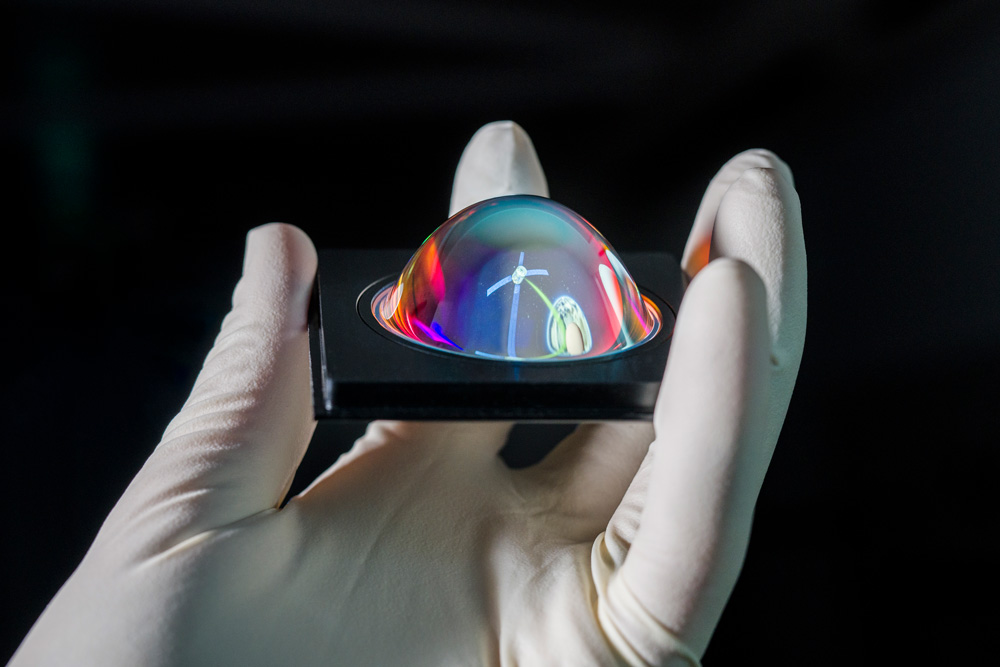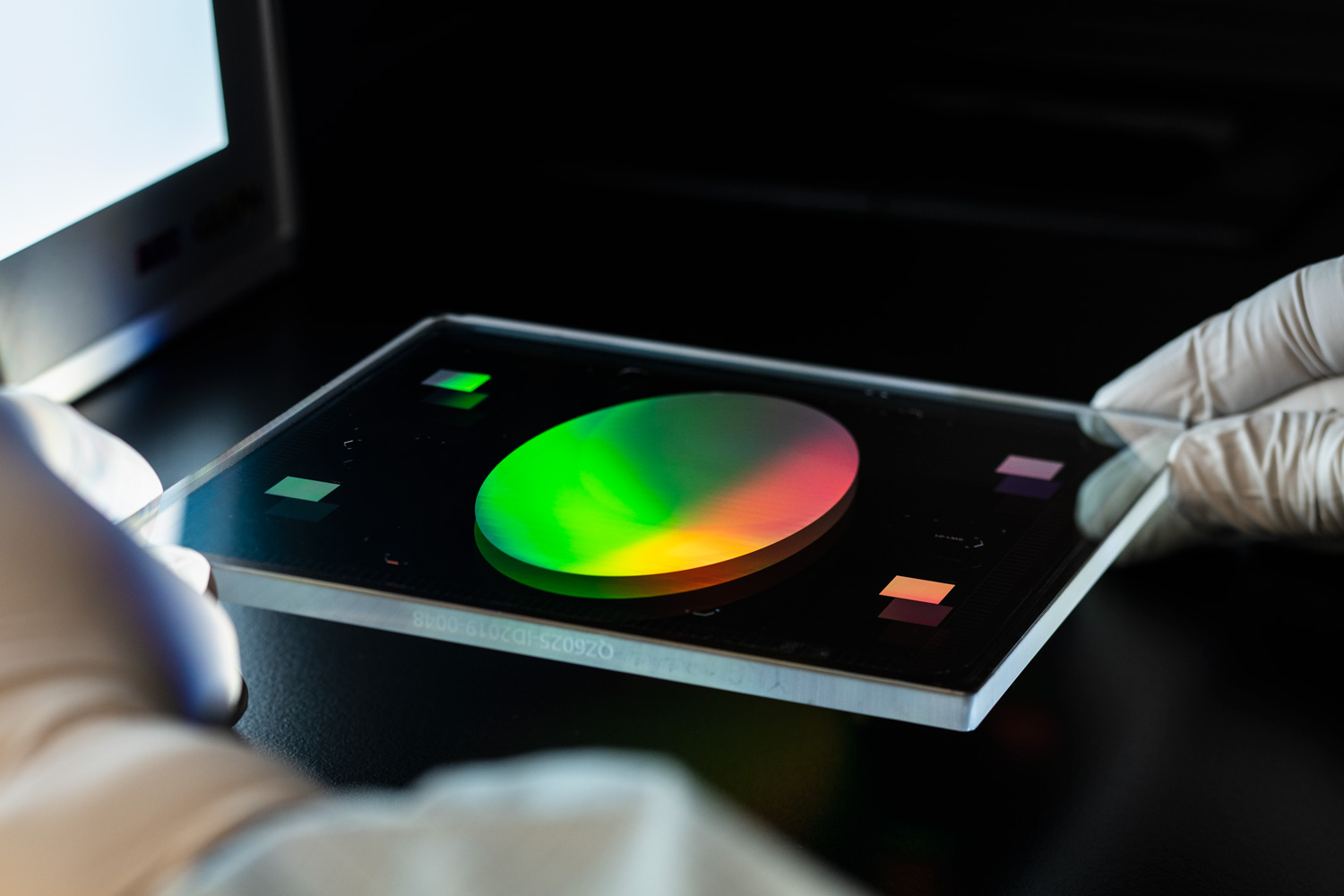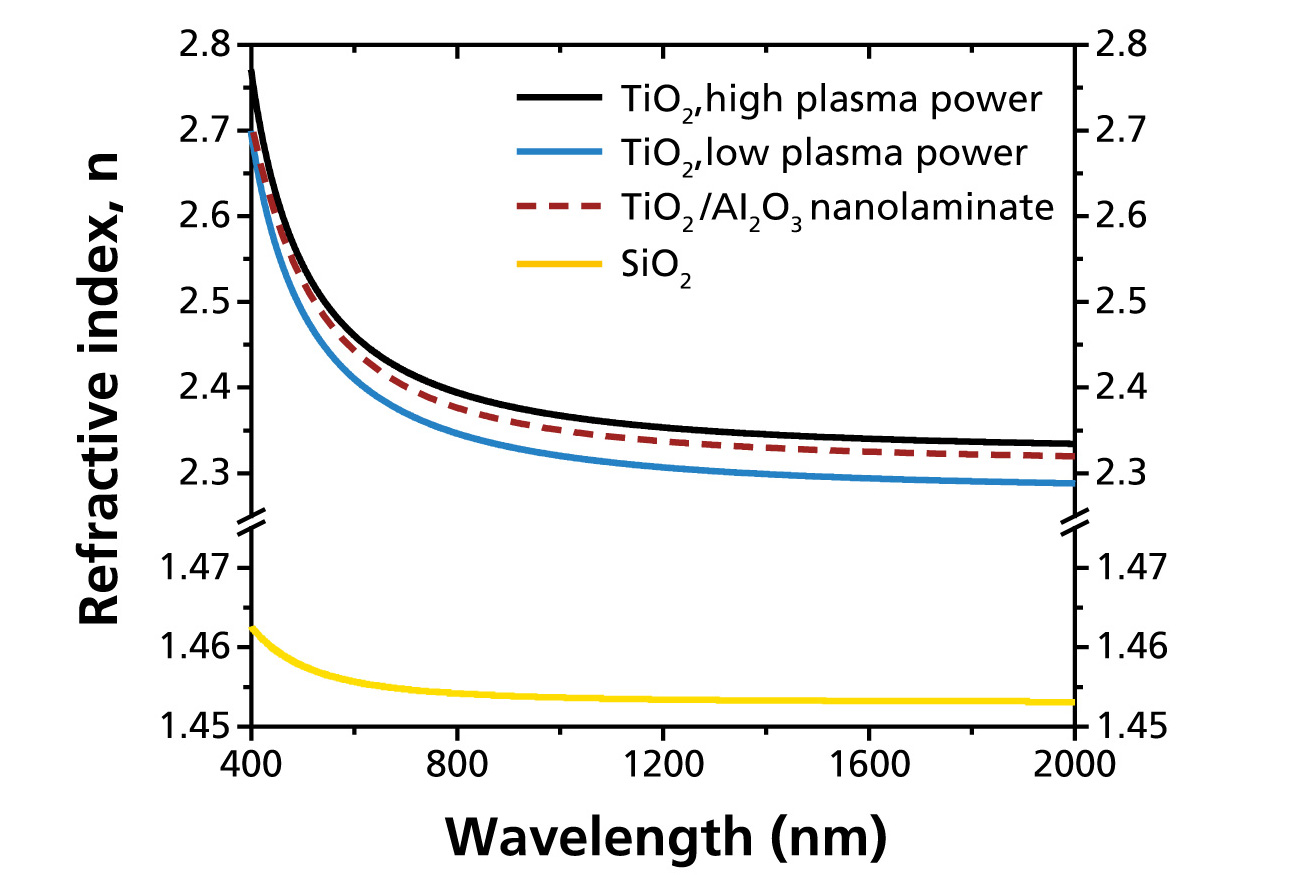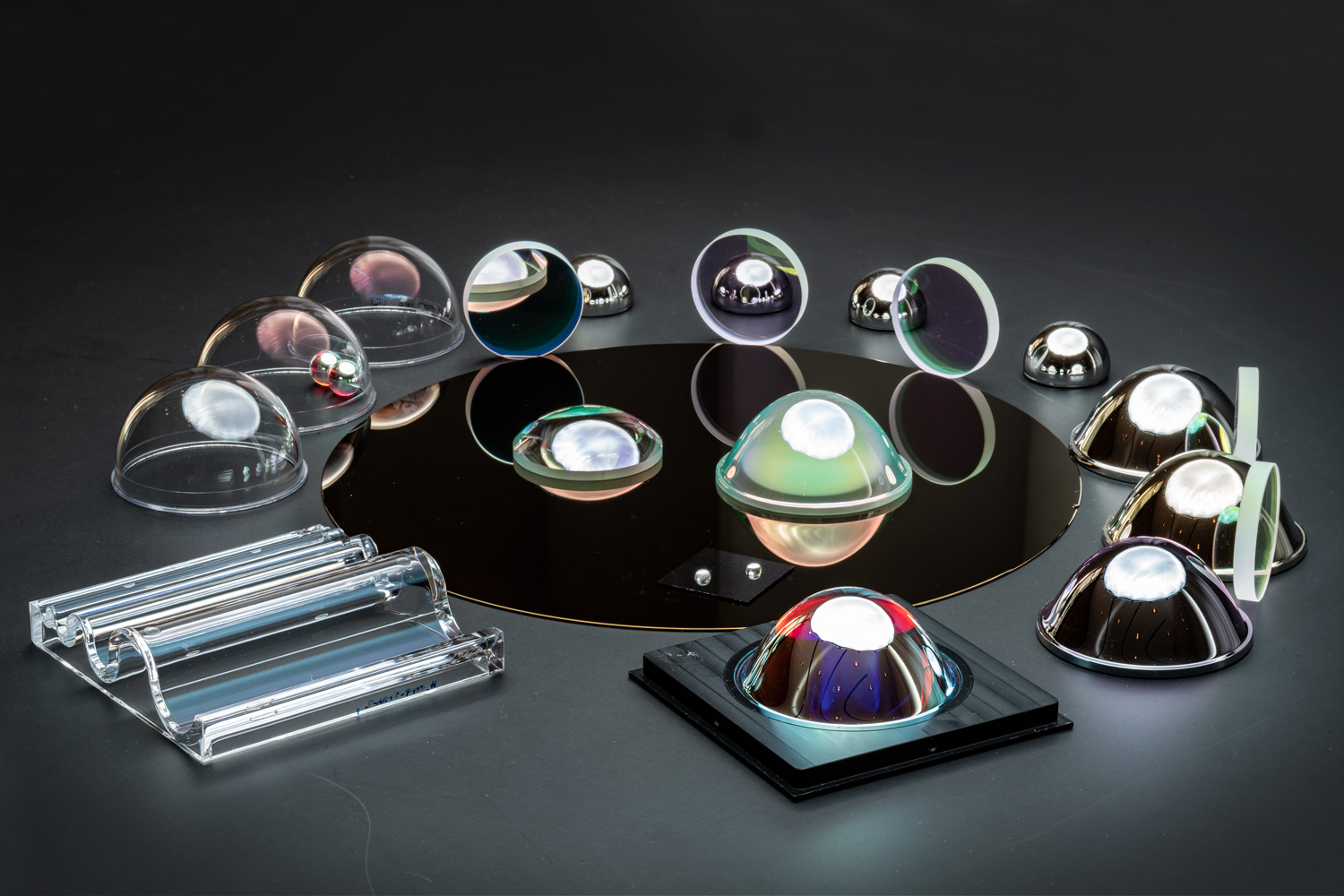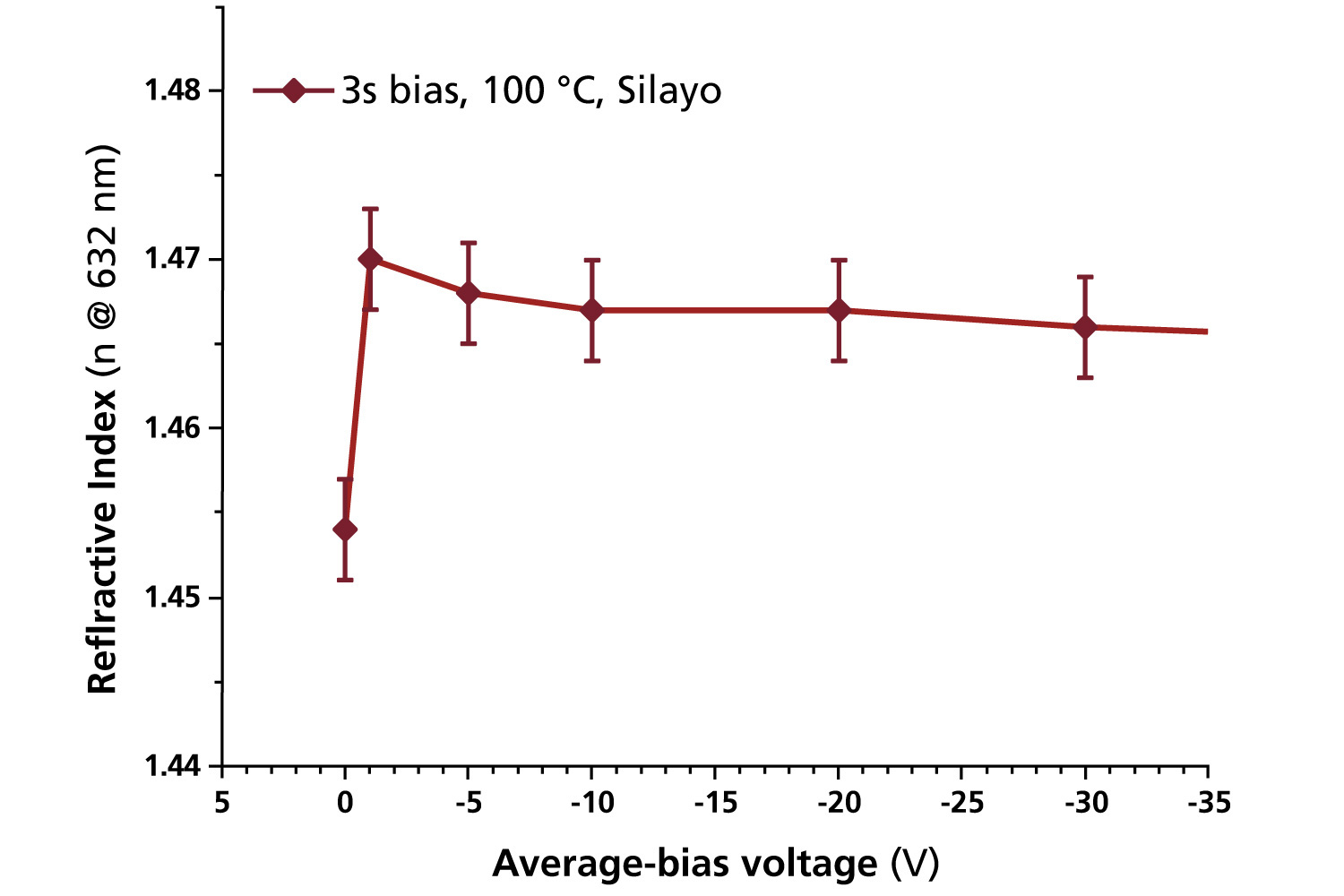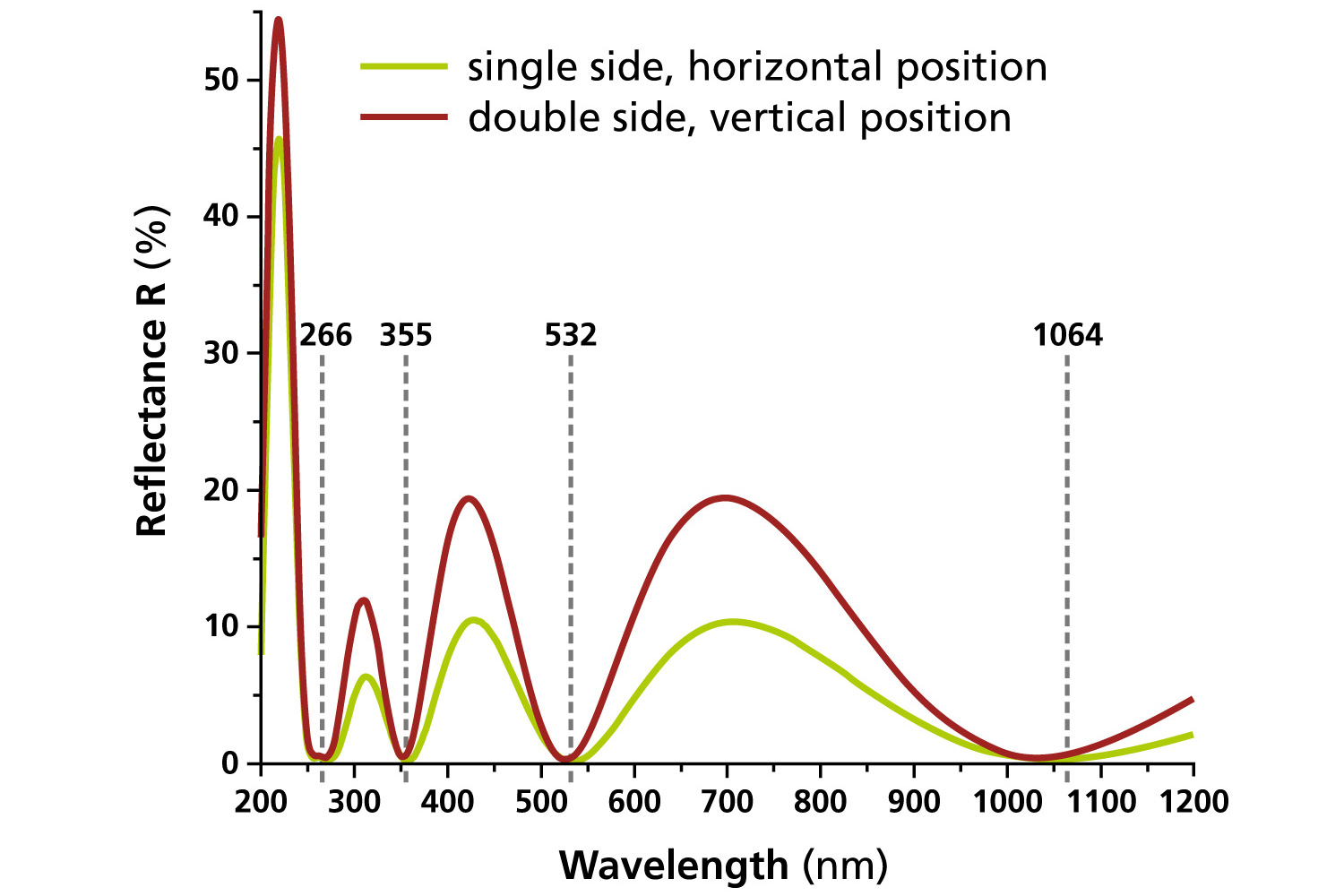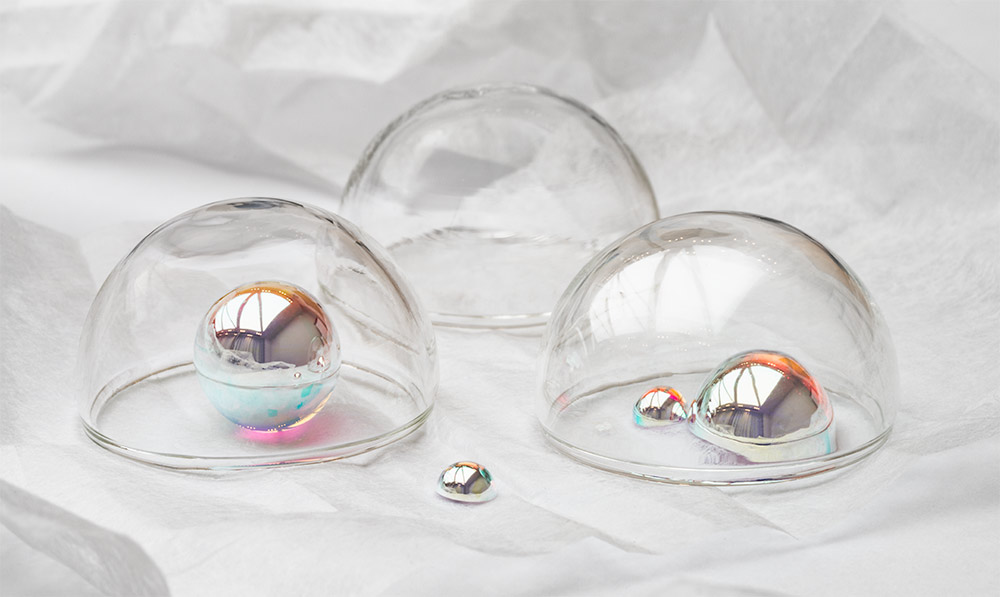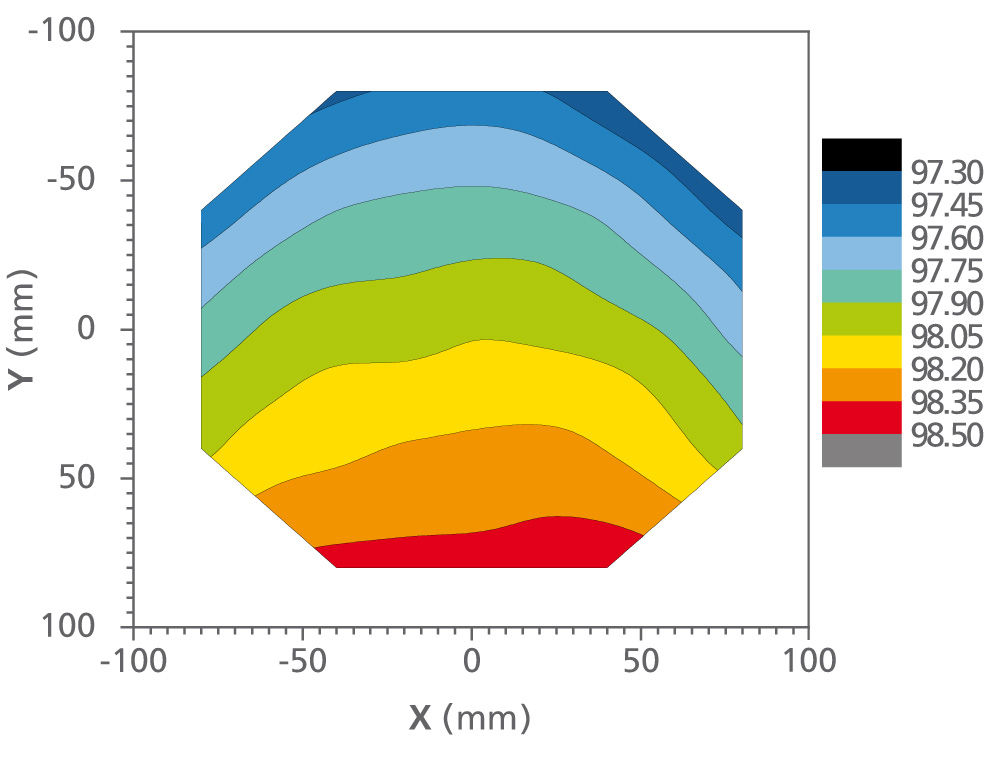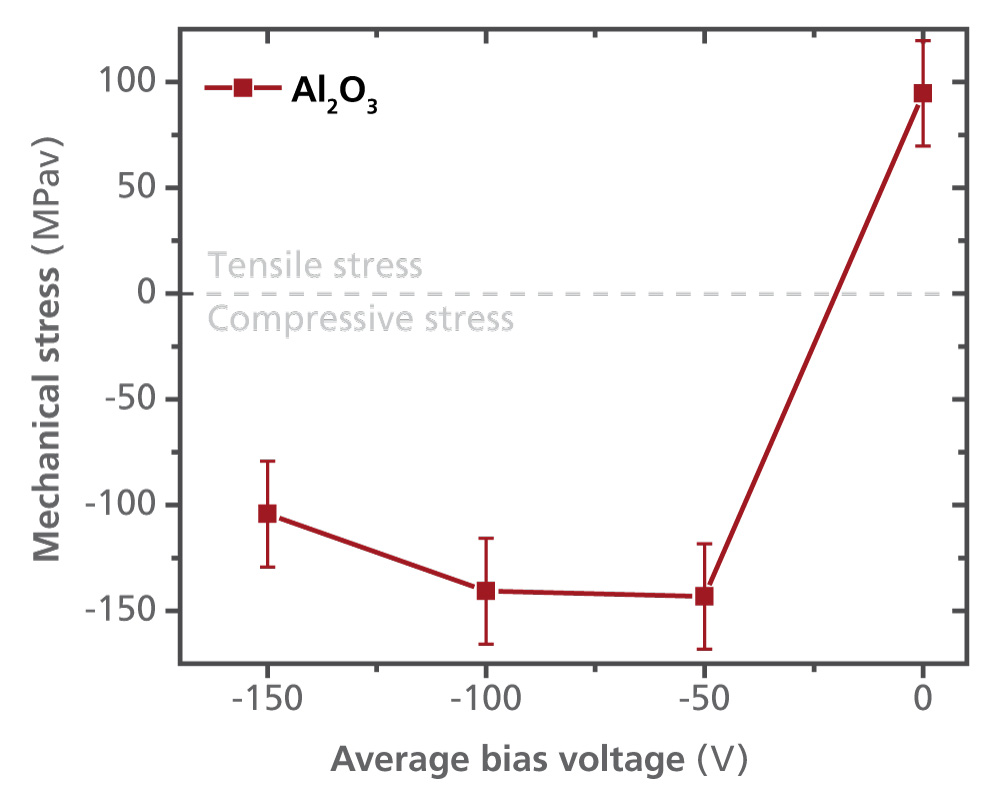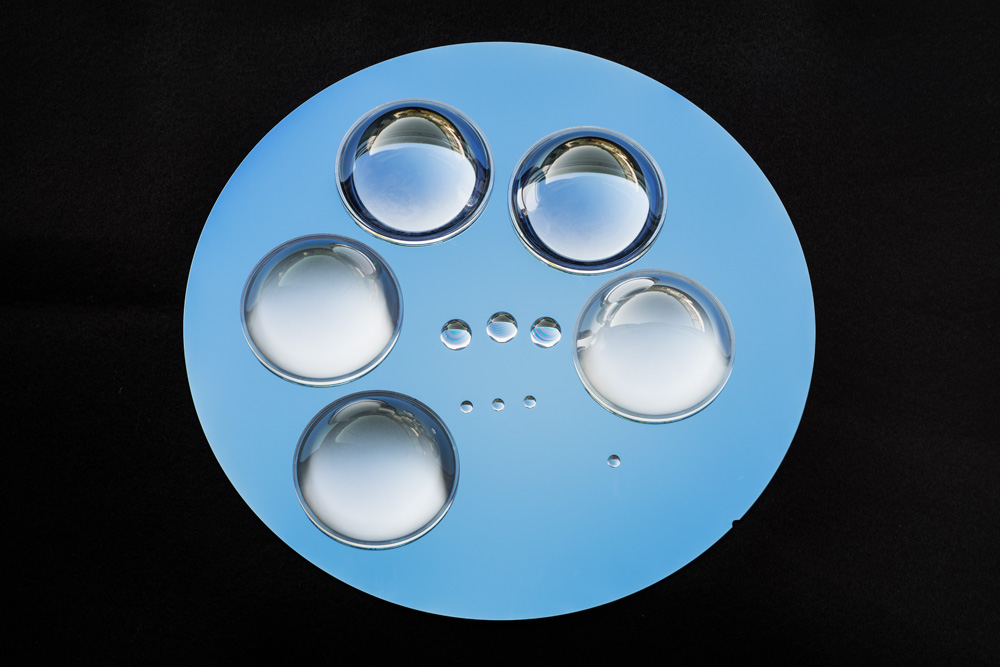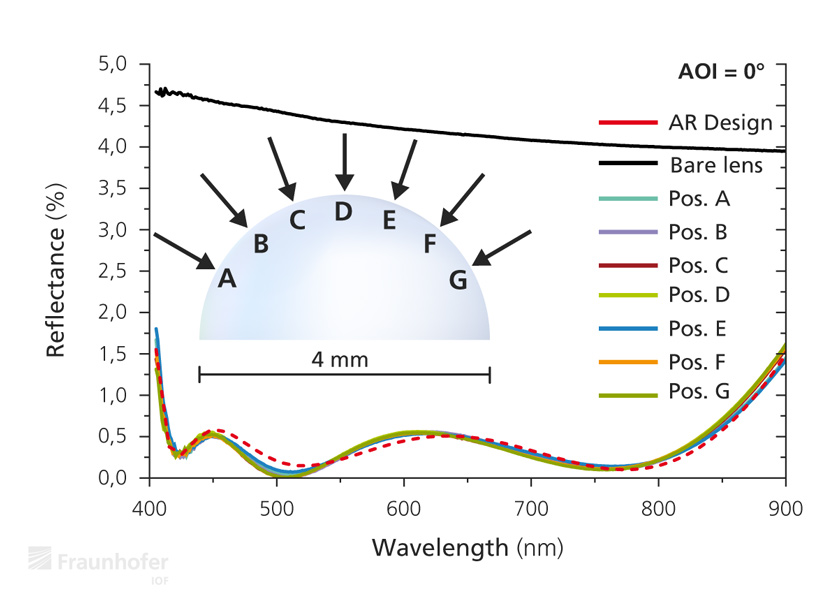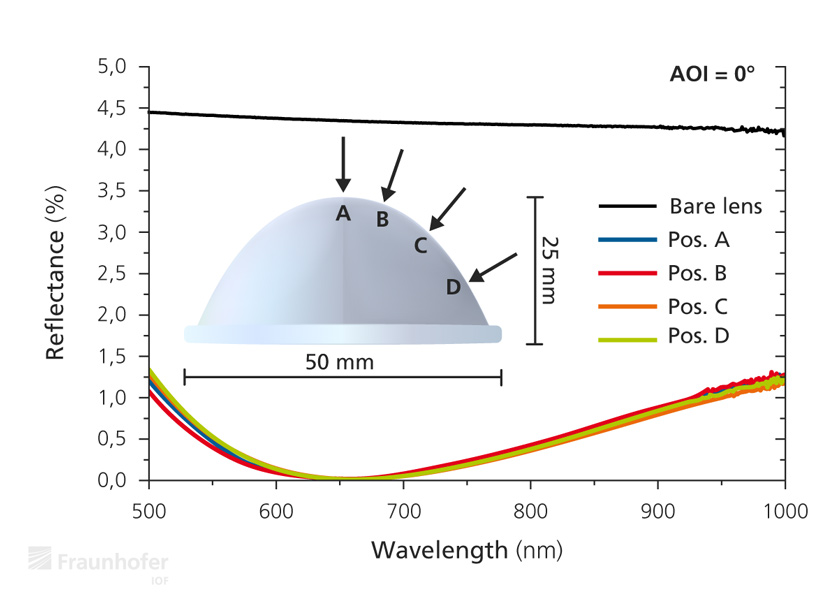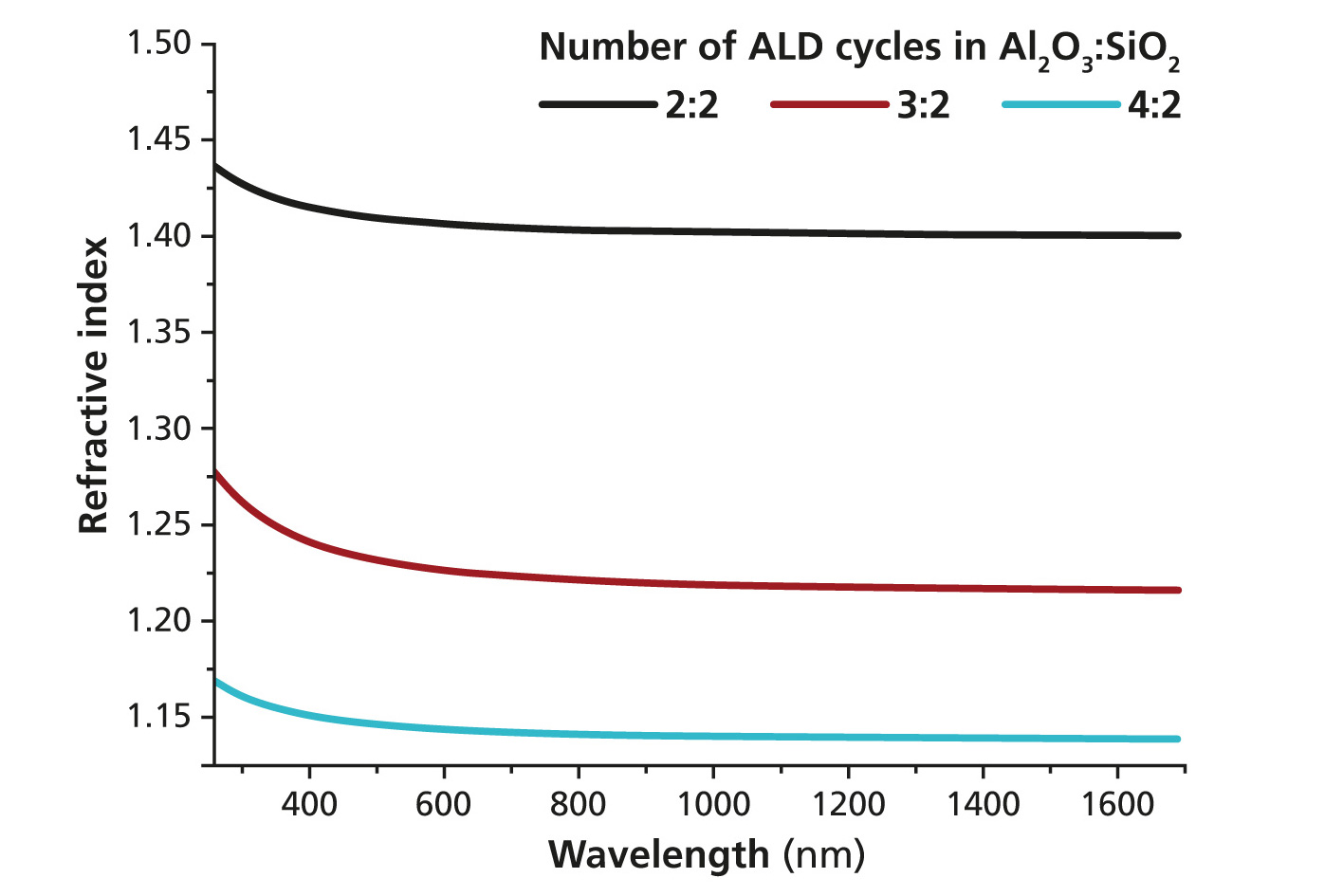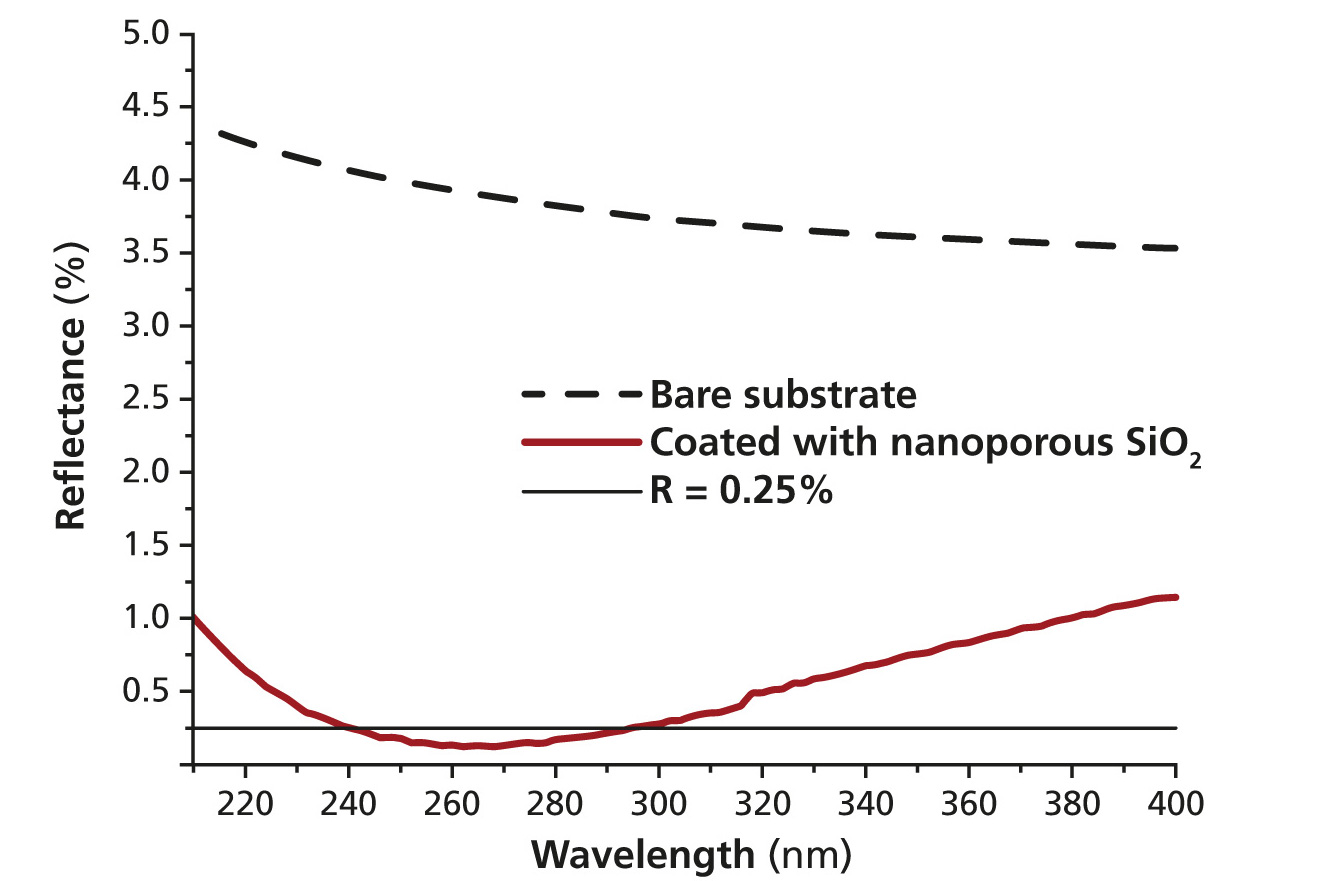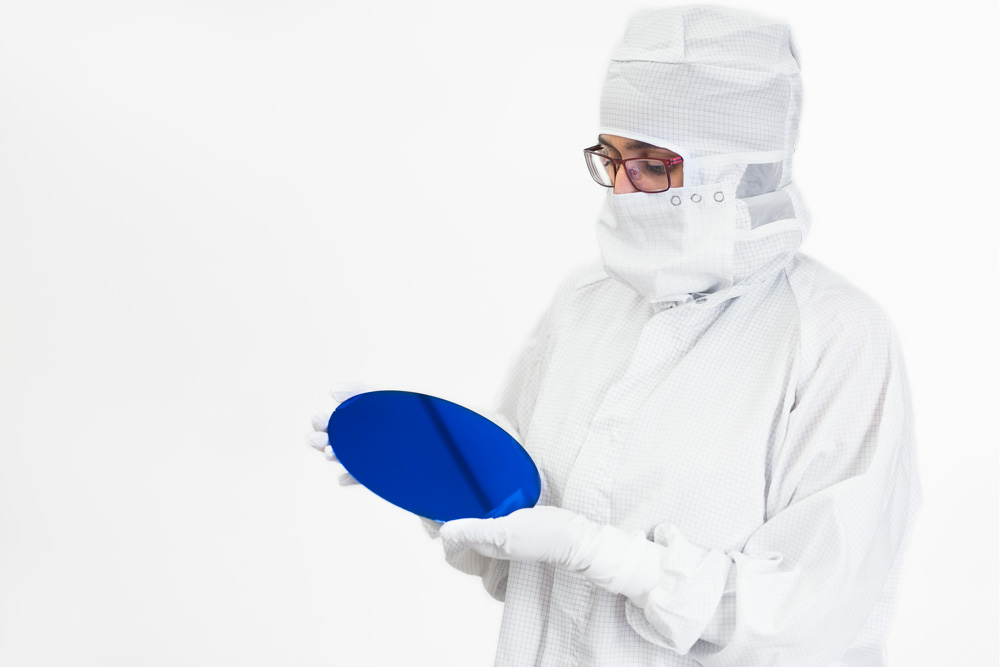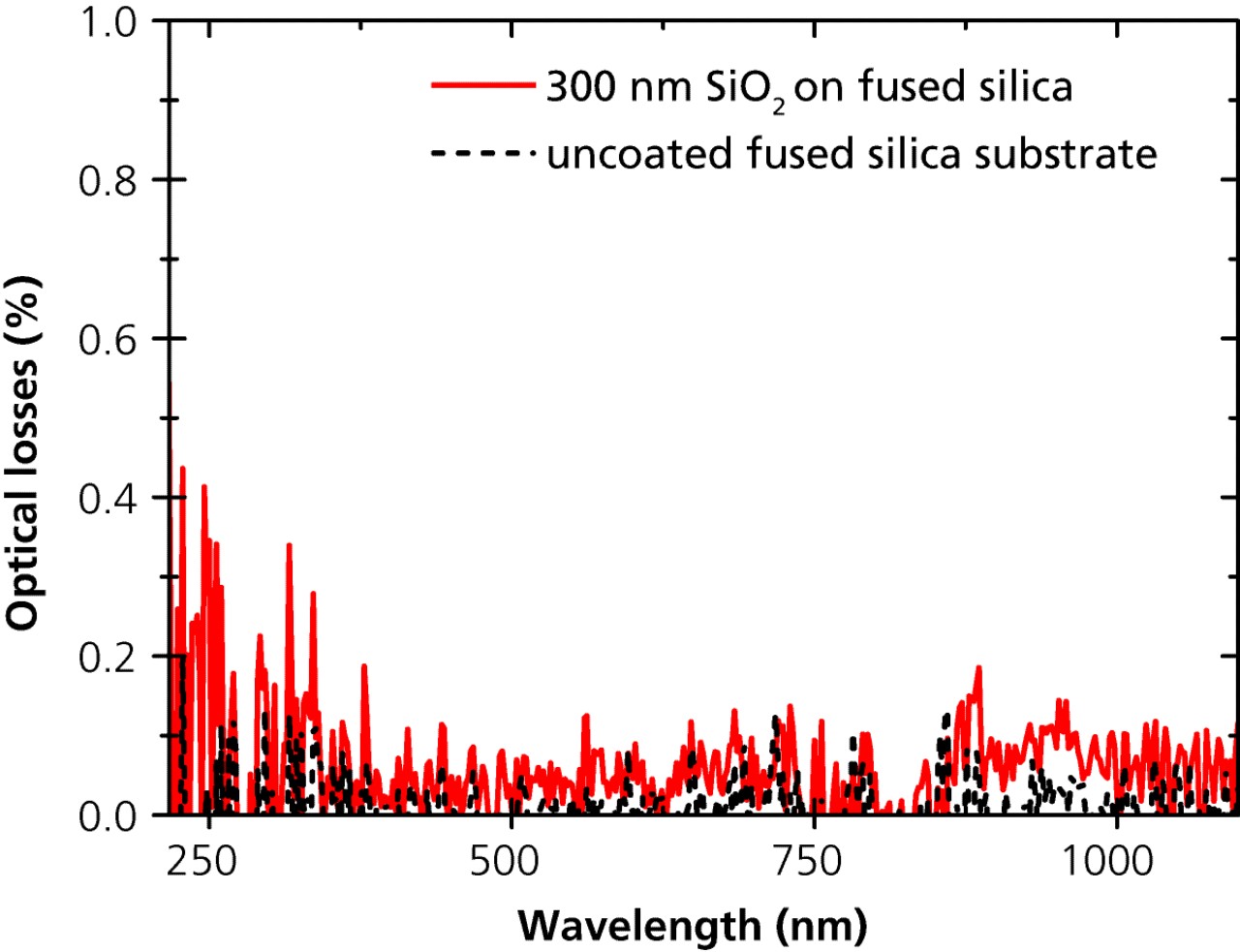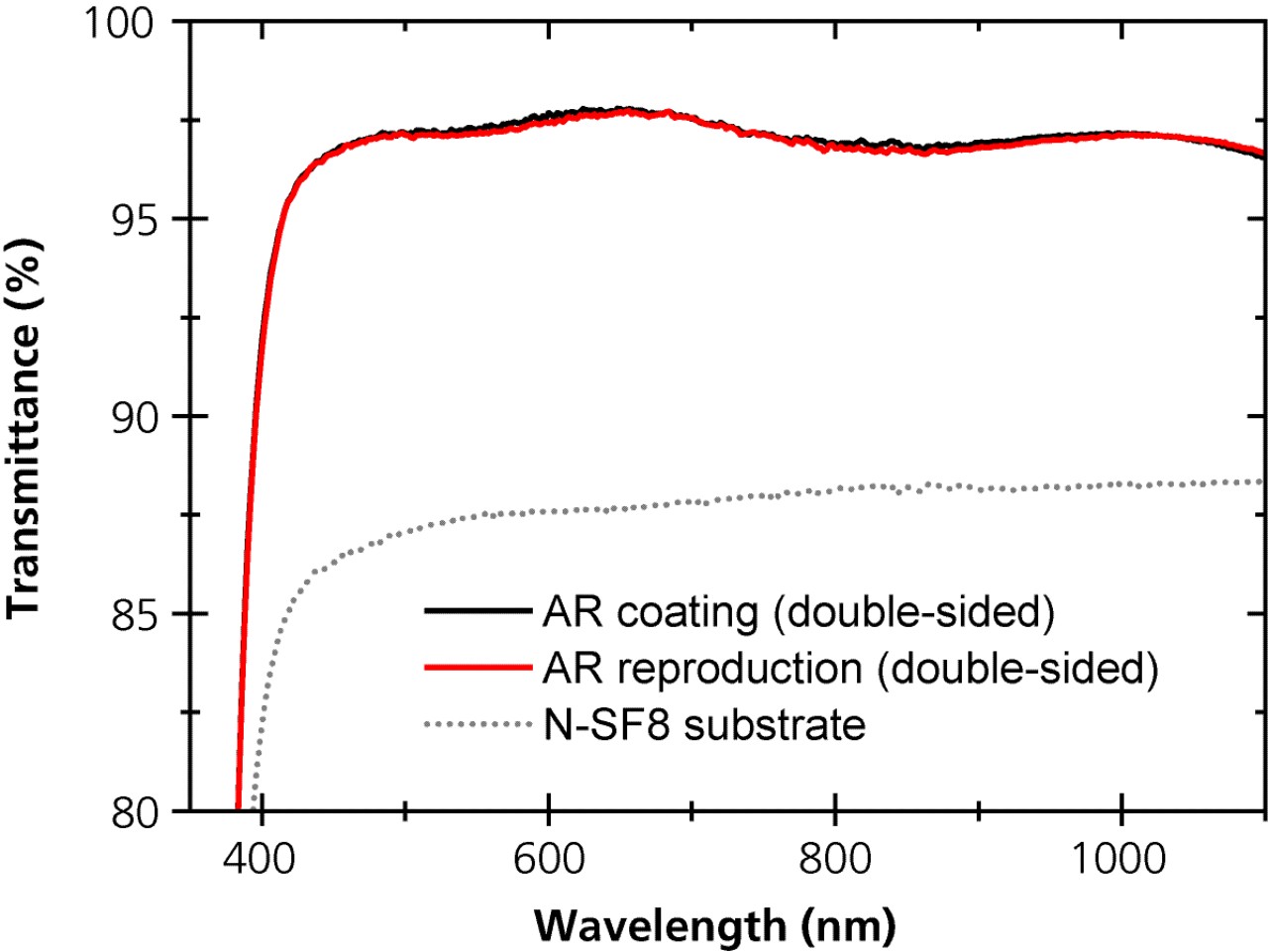The deposition of conformal coatings with a precise thickness is crucial for the production of high quality optical thin film stacks. Conventional techniques such as physical vapor deposition (PVD) are suitable for the deposition of thin films on plane surfaces. However, with PVD a non-uniform thickness is generated on curved surfaces, leading to distortions of the optical function of thin film stacks.
We are establishing atomic layer deposition (ALD) as an alternate method of meeting the high requirements on the thickness uniformity of the single layers and also on highly curved lenses and to control the thickness of optical film stacks without in situ monitoring.
The main advantage of ALD is its capability to deposit conformal coatings on structured surfaces with high aspect ratios. The film thickness is defined exactly by the number of ALD cycles. The deposited layers have a high lateral uniformity and low roughness.
With the developed ALD processes for Al2O3, TiO2, HfO2, and SiO2, we achieve a high reproducibility and a linear growth rate that is necessary for precise thickness control. Our results show that atomic layer deposited films exhibit only little absorption losses down to a spectral range of 200 nm (SiO2, Al2O3), 260 nm (HfO2), and 400 nm (TiO2). Laser calorimetric measurements (λ=1064 nm) of 300 nm films on quartz substrates revealed low absorption values of only 5.4 ppm (TiO2), 3.3 ppm (Al2O3), und 3.9 ppm (SiO2), whereas the substrate itself has losses of about 2.3 ppm. Using the materials SiO2 and HfO2, we demonstrated a broadband antireflection coating for the spectral range of 390 nm to 1100 nm. The thicknesses of the single layers are just controlled by the number of ALD cycles. In further experiments other optical elements such as dichroic mirrors and narrow bandpass filters will be realized.
